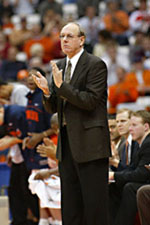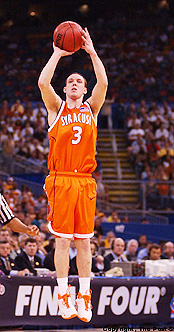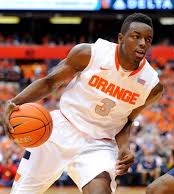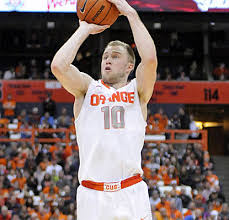The Syracuse Orange are now the unanimous #1 ranked team in
college basketball, following the weekend where they beat Duke in a thrilling
overtime game, and former #1 Arizona lost to California. Many fans, and particularly the media, will
say this is meaningless.
I disagree.
College basketball, for me, has always been about the
journey. It is about the thrill and
excitement of each game. It is about how
the team grows and develops, and how specific players grow into their
roles. It is about the ebb and flow of
the season.
The #1 ranking is something to be proud of. It is an accomplishment; it is not the
ultimate accomplishment, but it is nevertheless a goal to achieve. The players and coaches work hard for every
game, and the #1 ranking gives them, and the fans, a good benchmark for what
they have achieved so far.
The post season is important, and it is what you build the
season towards. However, I am not a
believer that it is National Championship or bust. For me, it is about being the best that you
can be. I am not disappointed about an
overachieving team losing a game and ending their season; I am disappointed
about a team that I had high expectations for bowing out very early in the postseason.
I hold a high importance on winning conference regular
season championships. I think it is
great to be the best team over a prolonged period of time. I also enjoy it when
the team wins the conference tournament.
A good run with exciting play in the NCAA tournament is a lot of
fun.
I was not disappointed with the 1986-1987 team that lost to
Indiana on the Keith Smart shot. That
team shook off a lot of demons for the program, allowing the team to advance
far into the tournament. Making it to
the championship was surreal; the fact they came within a shot of winning it
all was unbelievable. It was
heartbreaking when they lost, and it wasn’t until the 2003 championship that
the heartbreak was totally gone. But I have never considered the 1986-1987
season disappointing.
The same with the 1995-1996 season. That was a proud moment, not a
disappointment.
The game is about the moments. The 2003 National Championship was a great
feeling, and a fantastic moment, particularly the Hakim Warrick block. It was a culmination of 24 years of being a
Syracuse fan, and having it all pay off with a win. Very tough to explain that
feeling, but a wonderful one.
It is not my only great memory from Syracuse
basketball. Syracuse beating North
Carolina in the Elite Eight in 1987 is very high on my list. Other NCAA memorable games include Syracuse
beating Georgia in the 1996 NCAA tournament, and Syracuse beating Texas in the 2003
Final Four.
I have memories from games I attended in person. The Syracuse – Georgetown game in 1990 when
the Orangemen overcome a large deficit to beat the Hoyas in overtime in front
of a then record crowd at the Dome remains a top memory for me. Pearl Washington hitting the half-court shot
to beat Boston College in 1984. Gene
Waldron bombing Iona with 40 points in the Carrier Classic in 1983. Sherman Douglass setting the all-time assist
record and SU scoring record in 1989 versus UConn.
Big games such as the Duke / Syracuse game last weekend are
what it is all about. That game was fantastic, and it will remain fantastic,
regardless of how the season plays out.
The Big East tournament has brought many great memories. Far
too many to mention them all. Pearl
Washington versus Patrick Ewing and the Hoyas in the early 80s. Gerry McNamara carrying the Orange on his
back his senior season with perhaps the greatest single MVP performance in Big
East history.
The greatest moment for me is the Syracuse / UConn six
overtime game in 2009 is at the top.
That game wasn’t for a National Championship, and it wasn’t even for the
Big East Championship. The game was just a quarter final game in the
tournament. Yet it was everything I love
about college basketball, with two teams playing their heart out, tremendous
skill being shown.
Regardless how the 2013-2014 season ends, it will likely end
as a great memory to me. They have
overachieved in so many ways right now. It is rightful to hope for a National
Championship, because this team can win one.
However, I don’t think it would be a great disappointment to me if they
do not win it. It will be a
disappointment to me if they don’t play well in the NCAA tournament, but if
they lose to a team that outplayed them , so be it.
Right now the Orange are ranked #1, and that is something I am enjoying. That enjoyment does not disappear because next game, or next week, or next month, they lose a game. Today's moment is today's moment, and that is what is important. I will worry about tomorrow's moment when it presents itself.










